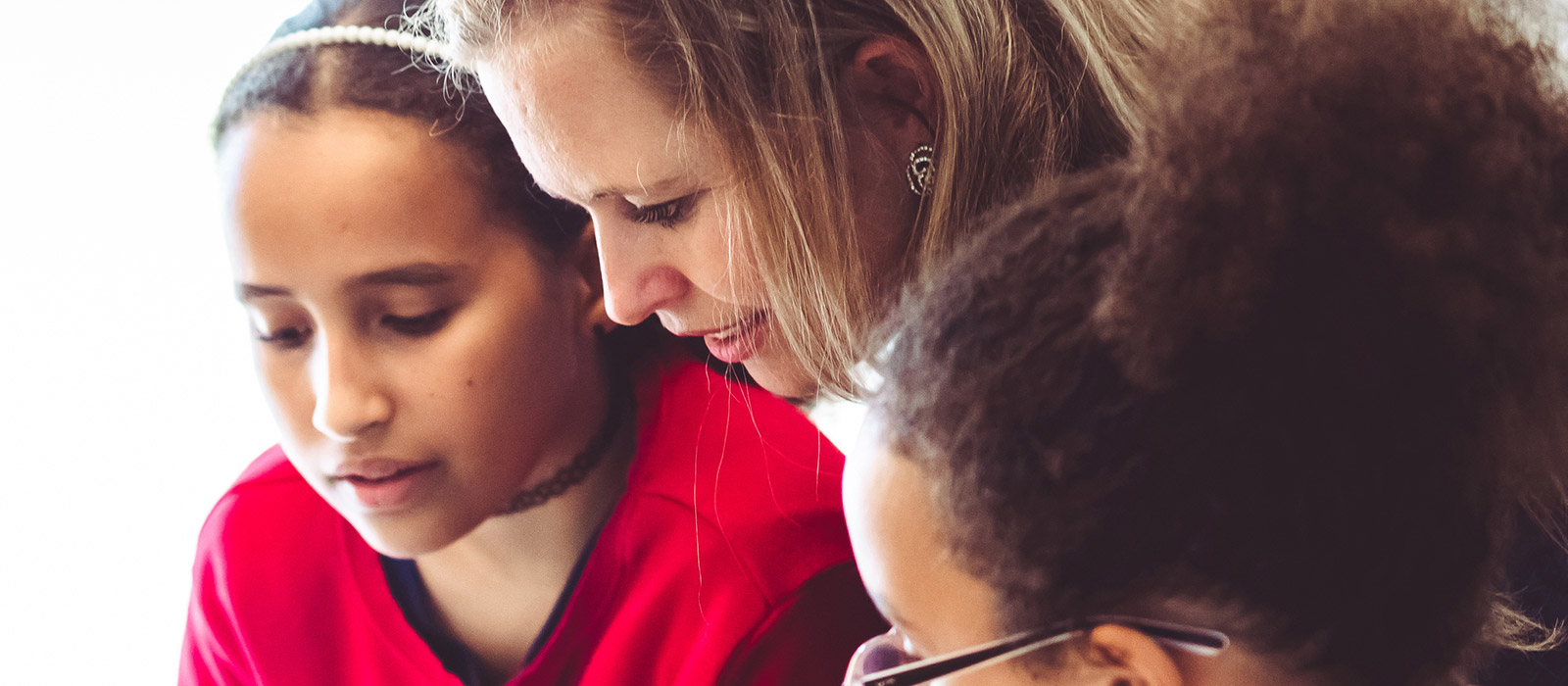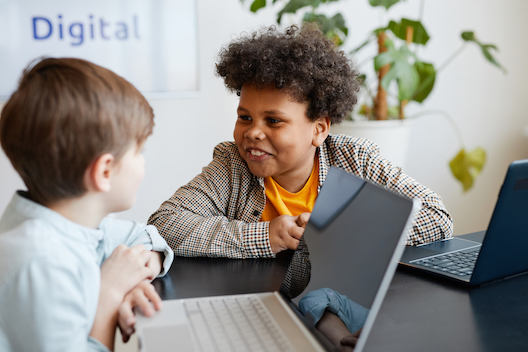East Palo Alto Academy (EPAA)—a small public high school launched in a low-income community in California once so violence-ridden it was identified as the murder capital of the United States— transformed student outcomes by incorporating practices built on the science of learning and development. In a district where two thirds of students once failed to graduate, the new school enabled 90% of students to graduate and 90% to go on to college by creating the conditions for cognitive, social, and emotional learning.
As in many other new schools, teachers began by identifying the fundamental competencies necessary for success in school and in life and then infusing them into every aspect of the school. The Five Community Habits developed by the staff in the first year—personal responsibility, social responsibility, critical and creative thinking, application of knowledge, and communication—were the basis of rubrics used for guidance and evaluation in every class, every year, by every teacher.
The social, emotional, and cognitive skills, habits, and mindsets incorporated into the rubrics include personal awareness and self-management for attendance, participation, personal honesty, and care for others. They also include interaction and collaboration skills, empathy and perspective-taking, and community building. Executive functions like planning, organizing, and managing projects; metacognitive skills like reflection for self-improvement; and capacities for perseverance exhibited by willingness to revise work are also incorporated into the rubric.
This framework, which guided the development of curriculum and the evaluation of student work, was used to teach students in a consistent and persistent manner what it meant to be a student, a worker, and a member of the EPAA community. Some skills, such as conflict resolution and study skills, were taught in advisory classes, while all were taught, modeled, and reinforced in academic and co-curricular settings. Because students were constantly reflecting on the skills in self-assessments, exhibitions, and student-led conferences, they internalized them deeply. As one student noted, “The [Five Habits] rubric has been the best thing for me over the last 4 years.” Because teachers incorporated these skills and habits into content classes as well as advisory classes, students grew to have a thorough understanding of the standards, commonly referenced them, and knew what was needed to meet them. Ericka, a student from the first graduating class, demonstrated her deep understanding of the habit of social responsibility as she reflected at her senior exhibition:
It was hard for me, because freshman year I was just really a cocky individual. I thought I knew it all; I didn’t want to work for anybody else, because I was big-headed. And part of this habit is how well you interact in a group. How well do you work with people who are not like you? If I put you in a group with [two other students], can you work with them? Can you get the job done? How do you move your group forward? … Are you interrupting me every time I’m trying to speak? … I would apply this [to the challenge of] being able to work with people who are not like you, who have different backgrounds from you, who have different viewpoints from you. Being able to tackle that in high school I think [will make it] easier for me to tackle it when I go to college.
Overview of the Development of Skills, Habits, and Mindsets
This brief glimpse into East Palo Alto Academy illustrates how a school can embed social, emotional, and cognitive skills and habits into an academically rigorous curriculum and empower students to practice these skills with growing independence. When such skills are practiced sufficiently to become habits, they support the development of engaged, productive, and effective learners in ways that transfer to new situations. By integrating these skills in the curriculum throughout the school day and across the 4 years, teachers at East Palo Alto Academy recognized that the development of complex dynamic skills is a progression that cannot occur at a single moment in time or in isolation from other abilities.
The educators at East Palo Alto Academy know that in order for young people to learn and thrive, they need rich opportunities to develop their whole selves. They created a simple framework that all school stakeholders could use to foster important cognitive, affective, and social skills along with domain-specific knowledge. This skill development was nested in an enabling environment full of rich experiences and trusting relationships that empowered students as active agents in their own learning.
Research across a diverse set of fields confirms that these kinds of skills, along with mindsets that support growth, belonging, and purpose, are critical for success in school and beyond. For example, the emotions young people have while learning affect how deeply they engage with activities and content. Positive emotions, such as a sense of personal value, along with interest and excitement, open up the mind to learning. Negative emotions, such as fear of failure, anxiety, and self-doubt, reduce the capacity of the brain to process information and to learn. It is our emotions that engage us or shut us down, and it is the development of productive skills, habits, and mindsets that substantially drives our emotions.
Turnaround for Children’s Building Blocks for Learning framework (see Figure 5.1) offers a comprehensive means for understanding how these skills are related and how they develop. Foundational skills (e.g., self-regulation, executive functions, self- and social awareness, and stress management) and mindsets (e.g., growth mindset, self-efficacy, and sense of belonging) lay the groundwork for higher-order skills and mindsets (e.g., agency, academic tenacity, curiosity, etc.). The framework acknowledges that instructional and contextual factors of classrooms substantially influence student outcomes. Students do not always have the same start in life or follow a smooth path through it, but through sustained and supportive relationships and personalized experiences, all students have the potential to succeed as learners.
Figure 5.1
Building Blocks for Learning

What the Science Says
Learning is social, emotional, cognitive, and academic. How does any student become a productive learner? What skills must they have? The science tells us that learning is integrated: There are not separate parts of the brain that support academic skills and social skills, for example. The parts of the brain are cross-wired and functionally interconnected. For students to become engaged, effective learners, educators need to simultaneously develop content-specific knowledge and skills along with cognitive, emotional, and social skills. These skills, including executive functions, growth mindset, social awareness, resilience and perseverance, metacognition, curiosity, and self-direction, are malleable: They are not “hardwired” but develop in response to experience. All are correlated with achievement, and all can be taught, modeled, and practiced just like traditional academic skills.
Social, emotional, and cognitive skills are interrelated and develop as a progression. Cognitive skills like self-regulation, executive functions, and problem-solving interact with emotional skills, such as empathy, emotion recognition, and regulation, and with social skills, including cooperation and communication. These interacting skills develop progressively, but not as a fixed, linear sequence: As with other skills, there are bursts and plateaus. Higher-order skills and abilities, when present, are a combination of foundational social, emotional, cognitive, and academic skill development. When teachers understand that these skills progress in concert with one another, they can design learning experiences that simultaneously build diverse learning skills, supporting engagement and effort instead of singularly focusing on facts and procedures in a given area without attending to social and emotional considerations.
Learning of these skills is influenced by relationships and experiences. Learning is highly context sensitive. A child’s skill and mindset development relies on an ongoing, dynamic interconnectedness between biology and environment, including relationships and cultural and contextual influences, resulting in significant variation within and across individuals over time. This contrasts with the idea of universal, fixed steps or stages of development. The norm is diverse developmental pathways—not missed opportunities, but rather multiple opportunities to develop new skills and/or catch up. Because each student’s development is nonlinear, with its own unique pathways and pacing that are highly responsive to positive contextual influences and support, the unique challenge of schools is to design personalized, supportive developmental learning experiences for all children, no matter their starting point.
This extends to the development of social, emotional, and cognitive skills, which should be taught throughout childhood and adolescence and may need particular attention when students face chronic, unbuffered stress due to adversity or oppression. In these cases, the development of foundational skills and mindsets, including self-regulation, stress management, and executive function, are at risk. These skills are exquisitely sensitive to the hormone cortisol.
The primary energy source for the wiring of the brain is human connection; the neurochemicals and hormones that are released through human relationships are the fuel causing neurons to fire and connect. As Hebb’s Law states, “Neurons that fire together, wire together.” The brain gets increasingly wired, and as it does, we become able to do increasingly complex things, whether it is reading, riding a bike, or gaining resilience. In his 1984 2 Sigma study, Benjamin Bloom demonstrated that building highly favorable conditions into the environments in which children grow and learn steeply improves equity of experience and opportunity.1 His proxy for highly favorable conditions was an individual tutor. He found that the experience of individual tutoring could take a student performing at the 50th percentile and move their performance up by two standard deviations to the 98th percentile. When he studied his data, he realized that the active ingredient that generated the outcomes he got was access to both the content and the adult– student interaction—the relationship.
What Schools Can Do
For students to become engaged, effective learners, educators need to simultaneously develop cognitive, social, and emotional skills along with content knowledge and related academic skills.
For students to become engaged, effective learners, educators need to simultaneously develop cognitive, social, and emotional skills along with content knowledge and related academic skills. The development of these skills is also a prerequisite for creating an equitable school environment.
Many schools are now familiar with what is called social and emotional learning (SEL), as many programs have emerged to help teach these skills. The Collaborative for Academic, Social, and Emotional Learning (CASEL) provides one helpful framework for understanding the skills, habits, and mindsets that further social and emotional development. It also offers research on the effectiveness of different approaches and programs, including self-awareness, self-management, social awareness, interpersonal skills, and responsible decision-making. (See Figure 5.2.)
Figure 5.2
CASEL’s SEL Framework
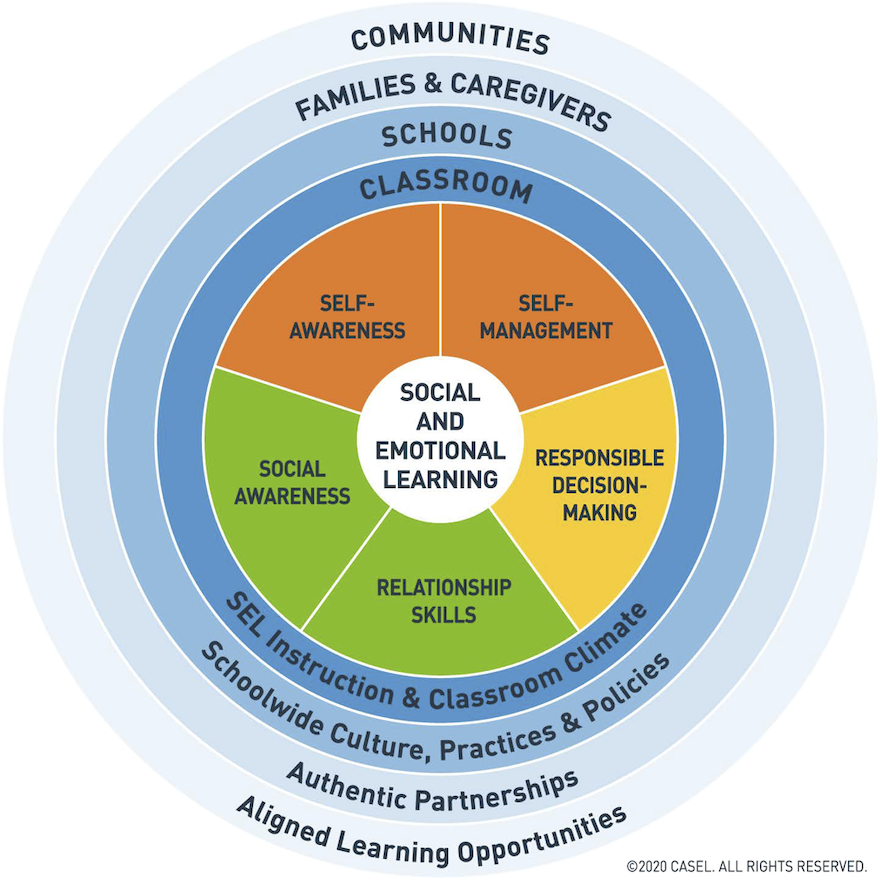
In addition, it is equally important to attend to the cognitive skills that are important for academic success and development. Key among these are those related to executive function, which help learners attend to tasks, plan their work, problem-solve in the face of emerging challenges, and manage themselves in the learning process. These skills include the abilities to monitor and regulate one’s own actions; to organize, prioritize, and activate efforts in order to accomplish tasks; to focus, sustain, and shift attention and alertness as needed to attain goals; and to manage frustration and redirect efforts when needed. (See Figure 5.3.) The skills that are critical to success in school and in life are often assumed, rather than explicitly taught, and need an equally explicit curricular approach.
Figure 5.3
Executive Function and the Abilities It Supports
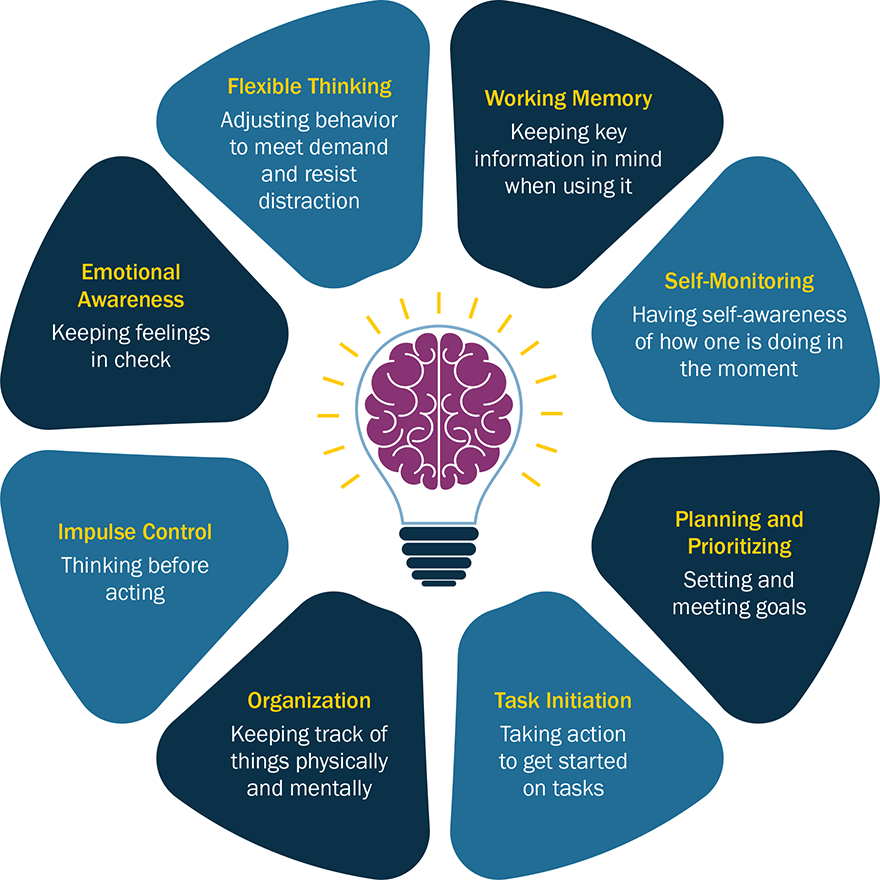
These areas of learning need to be planned for and integrated across curriculum areas and across all settings in the school. To achieve these aims, schools can incorporate the following structures and practices to develop learners’ skills, habits, and mindsets:
While we know that learning environments with these features help young people thrive in their learning and development, there are structures and policies in our current system that often inhibit the implementation of such features. These obstacles have stemmed from the failure of systems to recognize the connections among cognitive, social, emotional, and academic learning. For example, accountability structures in U.S. public education focused for many years exclusively on test scores in reading and mathematics, coupled with a “no excuses” philosophy that minimized the importance of social and emotional supports in schools. As a result, schools have often pared down the development of skills to attend to tested subjects and their related content.
This has exacerbated the perception that academic learning is distinct from the development of habits and mindsets, when in fact the research indicates that academic success is enhanced when they are developed together with academic content. As a consequence, many preparation programs for educators and administrators have not helped practitioners understand the interconnectedness of these skills, habits, and mindsets and, consequently, underprepared them to support students in building them.
Recent critiques have also pointed to the implementation of these skills in culturally insensitive ways that can exacerbate psychological harm against marginalized groups when ideas like self-regulation begin to serve as another form of policing in schools, discouraging students from displaying emotion and requiring forms of communication that align with the culture and norms of privileged groups. The weaponization of these practices against youth of color and other marginalized groups can fundamentally constrict the development and expression of their full selves, paradoxically undermining the purpose of SEL itself. In seeking to ensure that students are able to develop their full selves, it is imperative that the development of skills, habits, and mindsets is culturally responsive and anti-racist in vision and implementation.
While these challenges remain present, there are many ways that leaders and educators can build schools that intentionally develop valued skills, habits, and mindsets. (See Table 5.1.) Schools can support learners in developing their cognitive, social, and emotional capabilities by providing opportunities for their development throughout the day. Structured SEL programs are a good starting point but should be complemented with additional opportunities for these skills to be taught and integrated alongside traditional academic development. There is no single way to achieve these goals, but district and school leaders can consider a variety of structures and practices. (See “Where to Go for More Resources” at the end of this section.)
Table 5.1
Transforming Learning Settings for the Development of Skills, Habits, and Mindsets
|
Transforming from a learning setting in which … |
Toward a learning setting in which … |
|
the focus is on academic learning only |
cognitive, social, and emotional skills and habits that are essential to academic and life success are included |
|
an isolated program is used to teach SEL skills |
skill, habit, and mindset development are integrated throughout the curriculum and all school policies and practices |
|
schools use punitive approaches to challenging behaviors that lower students’ grades, deny privileges, or exclude them from activities |
schools explicitly teach desired behaviors with many opportunities to recognize and practice those behaviors |
|
culturally dominant approaches assume only one mode of interaction or expression and sanction other ways of communicating |
sensitive and affirming ways of developing skills, habits, and mindsets build on, rather than undermine, students’ cultural contexts and modes of expression |
|
skills, habits, and mindsets are addressed only in school |
families are enabled to understand the ways in which they can reinforce the development of skills, habits, and mindsets |
Integrating Social, Emotional, and Cognitive Development Into Learning
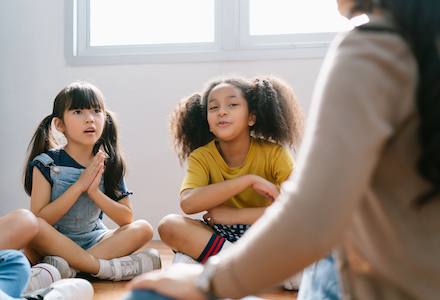
In order to ensure that these abilities are developed and reinforced in coherent ways schoolwide, it is useful for schools to start by identifying the skills, habits, and mindsets they value as a community and then work to create an agreed-upon set of goals and norms for staff and student learning and behavior. These may be called “habits of mind,” norms and values, or graduate competencies that pervade all aspects of the school’s operations. For example, East Palo Alto Academy—the school in this section’s opening vignette—identified “Five Community Habits” that came to inform the school’s collective work in support of youth learning and development. Batelle for Kids illustrates how to develop graduate competencies that can guide the skills and habits that focus teaching and learning in a school. Identifying a set of valued skills and mindsets is an important starting point that can inform the adoption and implementation of curricula, pedagogy, and routines to track student mastery toward those goals.
Curriculum and instruction for skill, habit, and mindset development
Academic learning should be accompanied by curriculum and instruction that explicitly engage students in developing social, emotional, and cognitive skills, habits, and mindsets.
Many formal programs and curricula for social, emotional, and cognitive learning have shown considerable success. Studies show that students who engage in programs show improvements in their social and emotional skills; attitudes about themselves, others, and school; social and classroom behavior; and outcome measures like test scores and school grades. A meta-analysis of over 200 studies found that students in SEL programs experienced reductions in misbehavior, aggression, stress, and depression and significant increases in achievement. A second meta-analysis found that these benefits were sustained in the long term, showing how learned attitudes, skills, and behavior can endure and serve as a protective factor over time. (See “Developing Social, Emotional, and Cognitive Skills at Lamar Elementary” for a look at explicit instruction on skill development in action.)
If schools choose to adopt an evidence-based program, there are particular features to consider. Research suggests that the most effective SEL programs are those that:
- are well-sequenced;
- engage students in active learning;
- focus on teaching and reinforcing specific skills; and
- are explicit about the skills they are teaching so that youth recognize what they are learning and how to use the skills.
However, adopting a program is not enough to ensure positive outcomes. To be successful, educators need ongoing coaching and follow-up support beyond an initial training. It is important that school leaders support the effective implementation of programs by setting high expectations and allocating resources for programming.
It is also important that educators prevent equity pitfalls in implementing curricula. Practitioners must emphasize student agency and the assets they possess and can develop, rather than assuming that the purpose of cognitive, social, and emotional development is to identify students’ deficits and instill skills some do not possess, meanwhile pointing out or punishing shortcomings. In addition, it is important that leaders and educators understand and appreciate the similarities and differences in cultural expressions of cognitive, social, and emotional competencies. Without this, practitioners may assume some students do not display or embrace skills, habits, or mindsets that conform to a mythical norm. The National Equity Project has developed guidance to prevent such pitfalls, as has CASEL, which offers a five-part webinar series to help practitioners and decision makers develop and implement SEL in ways that support and advance equity, social justice, and anti-racist practices.
Dedicated time for skill, habit, and mindset development
Dedicated and consistent time for social, emotional, and cognitive learning—in classroom meetings, advisories, and other settings—is needed to help students develop self-awareness along with valued skills and competencies.
Creating habits by integrating skills throughout all the work of the school
Integrating SEL in all classes and settings throughout the school day enhances the development of valued skills, habits, and mindsets.
It is important to recognize that stand-alone SEL curricula, while useful, are insufficient to inculcate the needed skills, habits, and mindsets when such practices are not actively modeled by adults, incorporated throughout the school day—during classes, lunchtime, recess, and extracurriculars, as well as in disciplinary policies and practices—and integrated into these routines in ways that are culturally affirming and relevant. As we describe in “Integrated Support Systems,” all the members of a school community need to develop a shared understanding of child and adolescent development so that students experience a coherent, supportive, mutually reinforcing set of practices that can help skills and mindsets take root. Integration of these skills in ways that develop long-term habits can help eliminate the view that some students need to be “repaired” and ensure that an experience of equity is at the center of these practices.
In studies of urban high schools integrating SEL into all aspects of the schools and coupling this learning with social justice goals, researchers found that many examples of valued skills and mindsets could be taught as part of disciplinary courses. In these schools, educators incorporated classroom activities focused on perspective-taking and developed empathy through curricular projects that asked young people to understand real-world challenges. Students learned interpersonal skills and developed executive functioning as they employed specific strategies for collaborating on projects and developed a growth mindset while revising their work in response to feedback. Community service helped them develop a social awareness and a sense of purpose and agency. A schoolwide emphasis on social justice, which highlights ideas of social engagement and interdependence and incorporates them into daily practice, helped to enhance students’ motivation and sense of agency, increase their achievement and attainment, and reduce educational inequality. In these schools, researchers found greater student engagement, achievement, and positive behavior (i.e., being collaborative and supportive of their peers, resilient, and employing a growth mindset) than in comparison schools.
Integrating social and emotional learning can be done organically and intentionally. School leaders and educators can model the use of SEL language and practices throughout the day, which creates schoolwide climate for SEL. Educators can capitalize on teachable moments as they emerge to reinforce, model, and practice valued social and emotional skills. Educators can also create opportunities for reflection to foster self-awareness, self-directed learning to emphasize self-management, and collaboration to nurture learners’ interpersonal skills in teaching different content areas.
Practitioners can also integrate opportunities for social and emotional development into their school and classroom routines. Figure 5.4 provides a visual illustration of how to integrate SEL throughout the school day.
Ways That Social and Emotional Learning Can Be Integrated Throughout the School Day
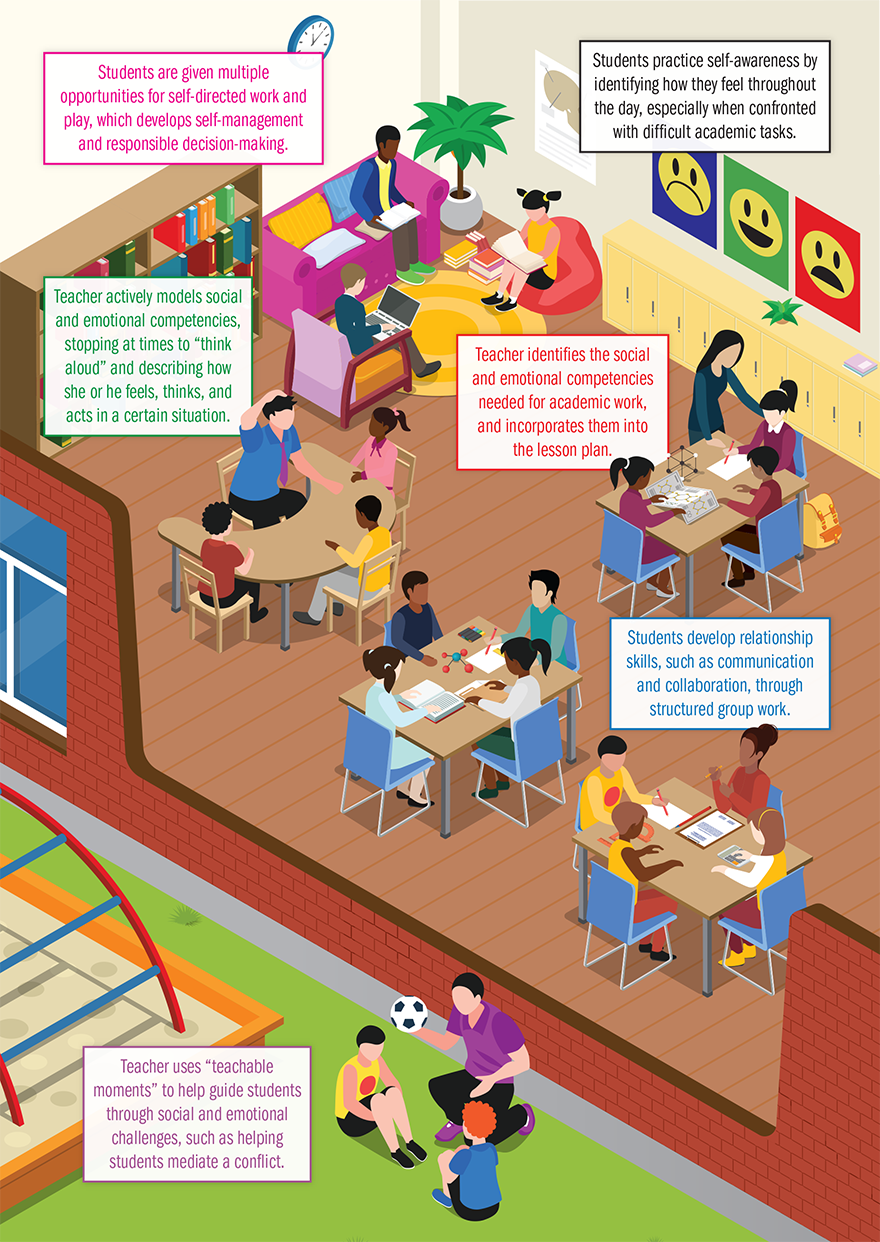
Educators can also create units of study or thematic units. Helpful resources are readily available: Facing History and Ourselves, EL Education, and Transforming Education have tools and curricula that include embedded SEL components. Resources based on the science of learning and development are available from the National Commission on Social, Emotional, and Academic Development, CASEL, Greater Good Science Center, and Turnaround for Children. (See “Building Skills and Knowledge Through Community-Based Learning” for a deeper look at how one school integrates academic, cognitive, social, and emotional learning.)
This web page provides several resources for schools and districts to implement SEL in their communities, such as program guides, an SEL assessment guide, a video titled SEL 101 for parents, and a district resource center that offers additional tools and resources to support high-quality implementation.
Developing Productive Habits and Mindsets

Students’ beliefs and attitudes have a powerful effect on their learning and well-being. If students hold negative perceptions of their ability to learn and thrive, this view can quell motivation and cause them to disengage. Conversely, productive dispositions can support youth in persevering through academic and personal challenges and put them on the road to academic success.
Work at the University of Chicago has identified four key mindsets as conducive to perseverance and academic success for students:
- Belief that one belongs at school
- Belief in the value of the work
- Belief that effort will lead to increased competence
- Sense of self-efficacy and the ability to succeed2
Effective programs that promote stronger learning for youth involve creating climates in which they feel respected and affirmed and giving them challenging work they are encouraged to improve upon.
Helping students build productive habits and mindsets can set into motion a cascade of effects that accumulate over time to result in more positive school outcomes, such as an increasing sense of connection to school and self-concept. These, in turn, result in higher levels of academic engagement that become self-reinforcing. Thus, teaching should seek to develop:
- productive mindsets that enable perseverance and resilience, especially a growth mindset;
- executive functioning that supports planning, organizing, problem-solving, and self-management;
- interpersonal and communication skills that support collaboration and enable students to describe their academic work and learning and their growth in character;
- reflective mindsets and skills that enable students to evaluate personal strengths, challenges, and progress toward goals; and
- compassionate and civic mindsets that encourage students to treat others with kindness, celebrate different identities, and contribute positively to their communities.
Strategies for nurturing growth mindsets
Students’ growth mindsets can be cultivated by carefully scaffolding learning and offering opportunities for feedback and revision that lead to greater competence.
Connecting skills development and academic endeavors to personal values can be really important to students because it can help students see the purpose of a skill as something that matters to them. One example of this is students holding a growth mindset about their intelligence and abilities. Young people who develop a growth mindset—the belief that they can improve through effort, trying new strategies, and seeking help—are less likely to become discouraged and more likely to try harder after encountering difficulties. They are more likely to tackle tasks at the edge of their capabilities than students who believe their skills are fixed. Students with confidence in their abilities to succeed on a task work harder, persist longer, and perform better than their less efficacious peers. This translates into stronger performance in school, greater achievement gains, and a willingness to try new things, and will often be transferred to other activities in life as well.
The core principle that skills can always be developed is consistent with what we know from neuroscience: that the brain is constantly growing and changing in response to experience. Learning this fact alone has been found to help change students’ perspectives on their learning and improve their perseverance. Providing feedback focused on effort and work process encourages students to adopt a growth mindset, whereas feedback that focuses on traits (e.g., whether someone is “smart”) has been found to depress student motivation and achievement.3
Providing students with meaningful learning challenges, supports, and a clear sense of progress leading to mastery helps students develop a growth mindset. For example, educators can construct learning experiences that make challenging tasks motivating and enhance students’ expectancies of success by actively structuring information, guiding and scaffolding students’ efforts, and providing multiple opportunities for students to grapple with information and represent understanding in a variety of ways with ongoing feedback.
Educators can also support students in developing a growth mindset by making a regular practice of providing opportunities for revision in response to feedback. The power of constructive critique and revisions are on full display in the practices implemented by an expert educator as he guides students at Presumpscot Elementary School in Portland, ME, in reviewing and providing feedback on written drafts. Instructional tools can support this practice, including the use of rubrics and self- and peer assessments. When followed by opportunities for revision, these tools can reinforce a growth mindset, as students consider specific feedback to guide the improvement of their work and build their belief in their ability to grow and succeed.
Practices that build a growth mindset are of particular importance for students from marginalized groups, as they frequently face implicit messages about their worth and potential that affect their self-concept and confidence levels. To counteract the forces that nurture self-doubt, educators can use practices that reinforce a growth mindset along with language and actions that show students that they are believed in and valued. For example, researchers have found that achievement is improved when students receive affirmations from teachers that they expect students to be able to meet a high standard when they revise their work, along with support to do so.4 (See “‘Revision and Redemption’ at East Palo Alto Academy” for a closer look at how a standard grading practice was turned on its head into a new policy that modeled a growth mindset.)
Strategies for developing executive functioning
Well-designed projects and exhibitions of learning help learners develop executive functions, including their ability to plan, organize their efforts, problem-solve, and self-manage.
Among the key habits that are important for academic success and development are those related to executive function, which help learners attend to tasks, plan their work, problem-solve in the face of emerging challenges, and manage themselves in the learning process.
Approaches and supports that can help strengthen executive function are strategies that support self-directed learning and work management—two habits associated with executive function that can be explicitly taught. Students can also be explicitly taught to develop organizational structures, plan and track their actions, and decide what behaviors they will pursue, which also help to strengthen executive function. Educators at the UCLA Community School in Los Angeles, CA, offer one rich example of this. At this school, students in grades 2–12 develop these habits and skills through the use of community-based self-assessment routines that promote executive function along with their bilingual reader identity. Early findings on the use of these tools indicate that students found these routines helpful and that their reflection and management skills deepened over time. These findings align with the broader research that shows that students who receive instruction in learning strategies, such as managing study time, goal setting, and self-evaluation, perform better academically.
The instructional practice of having youth publicly share their work in written, verbal, and media formats is another way executive function can be nurtured in classrooms. Making learning public builds student ownership of the work and cultivates executive function skills, particularly when these presentations incorporate opportunities for learners to share their strengths, challenges, and goals. Structures that support students to present their thinking, understanding, learning, achievements, and organizational skills include:
- sharing their thinking and understanding with small groups or the whole class as part of the learning process;
- regularly engaging in organization, reflection, self-assessment, and collection of evidence of their work;
- developing and planning presentations for various audiences in formal and informal settings; and
- giving attention to feedback provided that can inform and improve their work and skills moving forward.
Each of the above practices supports the development of executive function and does so in ways that empower and engage learners. Schools affiliated with EL Education, Envision Learning, and High Tech High provide rich illustrations of how these structures and practices can be implemented in classrooms to support the students in making learning public while building valued habits and mindsets.
At Summit Learning, students refine and improve a set of defined cognitive skills—including those associated with executive functioning—through project-based learning. Summit educators developed a cognitive skills rubric that operates in every subject and grade level. The faculty have built out, field-tested, and refined a library of projects in grades 6–12. Students work on projects in which they apply the content they have learned to real-world situations to develop these essential and transferable lifelong skills. Multiple cognitive skills are embedded in each project. Most projects culminate in a performance-based assessment such as an essay, lab report, or presentation.
Maintaining a well-scaffolded environment with strong organizational routines can work in conjunction with explicit learning opportunities to promote the habits and skills associated with executive function. For example, organizational routines in classrooms can help youth practice approaches to tasks that can become part of their own organizational structures and self-management later. These reliable approaches to tasks—ranging from organizing one’s notebook to planning a well-scaffolded project to engaging in well-organized collaborative tasks—can help students tackle challenging tasks and promote learning. These approaches simultaneously promote habits and strategies that can become part of their repertoires, especially if teachers are explicit about their reasons for different structures and if they gradually reduce scaffolding over time.
Strategies for developing interpersonal skills
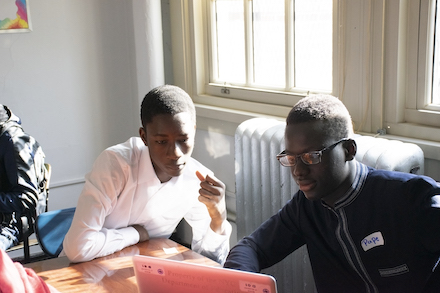
Students can learn to collaborate and build their interpersonal skills through well-structured approaches to group work that are regularly used.
Students’ interpersonal skills, including their ability to interact positively with peers and adults, to resolve conflicts, and to work in teams, all contribute to effective learning and lifelong behaviors. Specifically, developing students’ interpersonal skills helps promote learning and well-being by providing opportunities to:
- learn skills for communication and problem-solving;
- learn how to connect with others and intentionally seek out others for support; and
- develop empathy and an awareness of one’s own and others’ feelings.
A rich learning setting provides structures and practices that enable peers to collaborate in ways that support the development of mindsets, habits, and social skills. Well-managed group work is one such structure that has been proven to benefit interpersonal development. Substantial research identifies benefits of social learning in well-managed groups,6 and the capacity to work well in groups is an increasingly valued outcome of schooling. Collaborative learning can be used to provide students with learning assistance from peers, opportunities to articulate their ideas, and opportunities to develop metacognitive skills like self-regulation and executive function as they learn to manage themselves to interact productively with others and seek out help from teachers and peers.
Cooperative small group learning is one of the most studied approaches in education—with hundreds of studies finding significant achievement benefits for students when they work together on learning activities, as well as gains in student self-concept, social interaction, and time on task. Researchers have identified a number of social processes that help to explain why small group work supports individual learning. These include opportunities to share original insights, resolve differing perspectives through argument, explain one’s thinking about a phenomenon, provide critique, observe the strategies of others, and listen to explanations.
While well-managed group work can enhance student learning, it requires group-worthy tasks in which all must engage for the work to be successfully accomplished, support for students to learn to work together, and sophisticated questioning and scaffolding skills on the part of teachers. For example, in complex instruction classrooms—a much-researched approach that uses cooperative learning to teach at a high academic level using carefully constructed, interdependent group tasks—students are taught to undertake different roles (e.g., materials manager, timekeeper, task minder, and others).
To support productive collaboration, the teacher orchestrates tasks, relationships, and supports, and disrupts status hierarchies that can develop among students based on dis/abilities, language background, or other characteristics. To do this, teachers structure tasks to ensure that students can use their different competencies to accomplish a group task. Teachers can also “assign competence” to a student by recognizing the student’s contributions to the task by publicly noting his or her contribution or expertise, which boosts the student’s participation and standing in the group. These moves produce strong learning gains and reduce achievement gaps among student groups. (See “Structured Peer Collaboration at Impact Academy of Arts and Technology” for an example of well-managed group work.)
As structured collaboration enhances learning, it also provides opportunities for students to build connections with their peers, which can foster empathy, cross-cultural dialogue, and a sense of collective responsibility and community. (See “Positive Developmental Relationships” for a fuller discussion of community-building practices.)
Practices that promote metacognitive skills
Self-awareness and metacognitive skills can be supported through opportunities for self-reflection and self-assessment using reflection protocols, rubrics, and other tools.
All educators can play an active role in supporting students with a repertoire of words and strategies that help them build self-awareness—another important habit that can support learning and well-being. In many cases, the structures and practices that support collaboration, executive function, and growth mindsets also nurture a sense of self-awareness among learners. For instance, as they assess and manage their progress and learn to share space and time with their peers, students build their capacity to be reflective and take stock of their actions and emotional states.
In addition, educators can help nurture self-awareness by using tools or approaches that guide students through a process that helps them identify their thinking or emotions and articulate them in productive ways. For example, teachers might guide students through conflict resolution by walking students through a structured, stepwise process that involves calming techniques, turn-taking (in which each student acknowledges the other’s perspectives and emotions), reflection on what happened and how it affected various individuals, and collaborative solution development.
Collaborative learning structures can also provide occasions for the development of self-awareness and metacognition, as this vignette from Lakewood Elementary School illustrates. Groups conducted a collective analysis, developed a consensus on central ideas, and worked together to present these ideas publicly to the class; then they reflected on their work and presentation to figure out how to improve in the future. This collaborative work not only allowed learners to practice their interpersonal skills, but also reinforced important habits and mindsets related to self-awareness, a growth mindset, and executive function.
To help students learn how to reflect on what they have done and learned, educators can also use think-alouds and other modeling practices to describe their own thinking and processing. The use of metacognitive language and modeling can help make learning and skill development visible while showing learners how one can pose internal questions or pause to reflect in ways that grow self-awareness and productive paths forward. As educators support students in becoming more self-aware, they can couple this practice with attention to strategies for calming and self-management. Personal and academic challenges will inevitably emerge in students’ developmental journeys that will affect their well-being and engagement in learning tasks. With this, practitioners can provide structured time and opportunities to help young people recognize their emotional states and identify strategies they can use to cope.
This website connects educators with an array of resources that can help them apply evidence-based strategies to advance student success, including those that support the development of growth mindsets. Free resources like the Mindset Kit help practitioners learn about adaptive learning mindsets and the teaching and learning strategies that can enable it.
Summary
Schools and classrooms that simultaneously emphasize academic growth and the development of the valued skills, habits, and mindsets that propel it are necessary for student learning and well-being and for educational equity. This section has illustrated how certain key structures and approaches can support the integrated and progressive nature of skill development and how they can be incorporated into the daily experience and work of school. Examples include dedicated time and curricula for social, emotional, and cognitive development; consistent routines and opportunities; projects that create opportunities for youth to build their skills along with disciplinary knowledge; and the practices that make their development visible and scaffolded.
Where to Go for More Resources
This web page provides several resources for schools and districts to implement SEL in their communities, such as program guides, an SEL assessment guide, a video titled SEL 101 for parents, and a district resource center that offers additional tools and resources to support high-quality implementation.
This website connects educators with an array of resources that can help them apply evidence-based strategies to advance student success, including those that support the development of growth mindsets. Free resources like the Mindset Kit help practitioners learn about adaptive learning mindsets and the teaching and learning strategies that can enable it.
Endnotes
- Bloom, B. S. (1984). The 2 sigma problem: The search for methods of group instruction as effective as one-to-one tutoring. Educational Researcher, 13(6), 4–16. https://doi.org/10.3102/0013189X013006004.
- Farrington, C. (2013). Academic mindsets as a critical component of deeper learning. University of Chicago: Consortium on Chicago School Research.
- Dweck, C. S. (2000). Self-Theories: Their Role in Motivation, Personality, and Development. Psychology Press; Dweck, C. S. (2017). Mindset (2nd ed.). Brown, Little Book Group.
- Steele, C. M. (2011). Whistling Vivaldi: How Stereotypes Affect Us and What We Can Do. W.W. Norton & Company.
- Perkins, D. (1993). Teaching for understanding. American Educator: The Professional Journal of the American Federation of Teachers, 17(3), 28–35.
- Perkins, D. (1993). Teaching for understanding. American Educator: The Professional Journal of the American Federation of Teachers, 17(3), 28–35.
References
For more information on the research supporting the science and pedagogical practices discussed in this section, please see these foundational articles and reports:
- Cantor, P., Osher, D., Berg, J., Steyer, L., & Rose, T. (2018). Malleability, plasticity, and individuality: How children learn and develop in context. Applied Developmental Science, 23(4), 307–337. https://doi.org/10.1080/10888691.2017.1398649.
- Darling-Hammond, L., Flook, L., Cook-Harvey, C., Barron, B. J., & Osher, D. (2019). Implications for educational practice of the science of learning and development. Applied Developmental Science, 24(2), 97–140. https://doi.org/10.1080/10888691.2018.1537791.
- Osher, D., Cantor, P., Berg, J., Steyer, L., & Rose, T. (2018). Drivers of human development: How relationships and context shape learning and development. Applied Developmental Science, 24(1), 6–36. https://doi.org/10.1080/10888691.2017.1398650.
